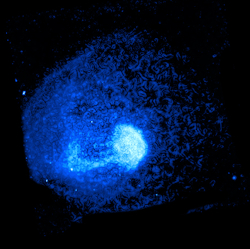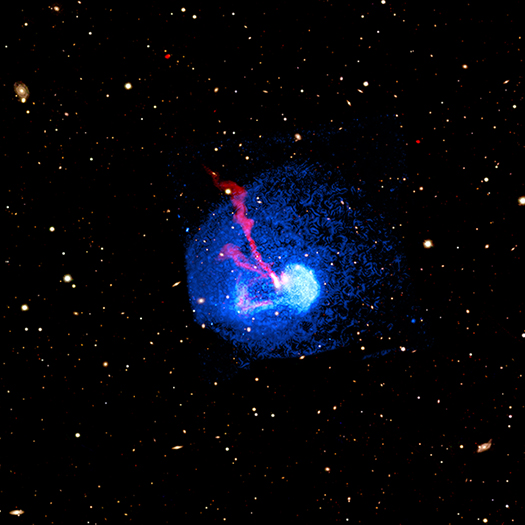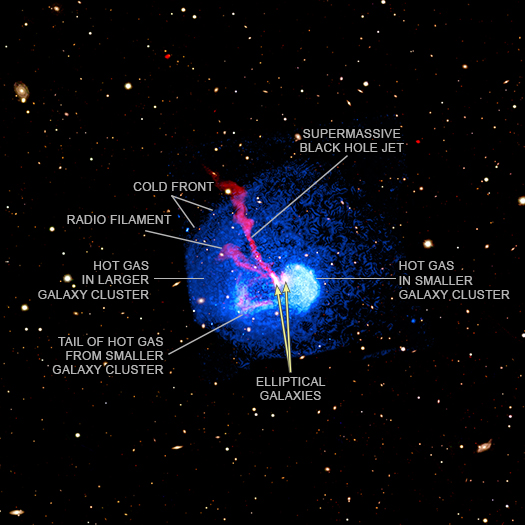X-ray: NASA/CXC/Leiden Univ./A. Botteon et al.;
Radio: LOFAR/ASTRON; Optical/IR:PanSTARRS
When the titans of space —
galaxy clusters — collide, extraordinary things can happen. A new study using NASA's Chandra X-ray Observatory examines the repercussions after two galaxy clusters clashed.
Galaxy clusters are the largest structures in the Universe held together by
gravity, containing hundreds or even thousands of individual
galaxies immersed in giant oceans of superheated gas. In galaxy clusters, the normal matter — like the
atoms that make up the stars, planets, and everything on Earth — is primarily in the form of hot gas and stars. The mass of the hot gas between the galaxies is far greater than the mass of the stars in all of the galaxies. This normal matter is bound in the cluster by the gravity of an even greater mass of
dark matter.
Because of the huge masses and speeds involved, collisions and mergers between galaxy clusters are among the most energetic events in the Universe. ...
A new image of Abell 1775 contains X-rays from Chandra (blue), optical data from the
Pan-STARRS telescope in Hawaii (blue, yellow, and white), and radio data from the LOw Frequency ARray (
LOFAR) in the Netherlands (red). The tail is labeled in this image along with a region of gas with a curved edge, called a "cold front," that is denser and cooler than the gas it is plowing into. The tail and the cold front all curve in the same direction, creating a spiral appearance. A separate labeled image shows the field of view of the Chandra data. ...
 HEAPOW: Collision of Clusters (2021 Aug 16)
HEAPOW: Collision of Clusters (2021 Aug 16)

